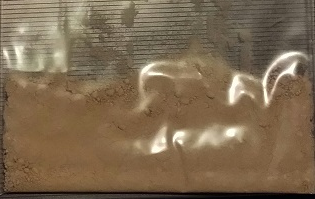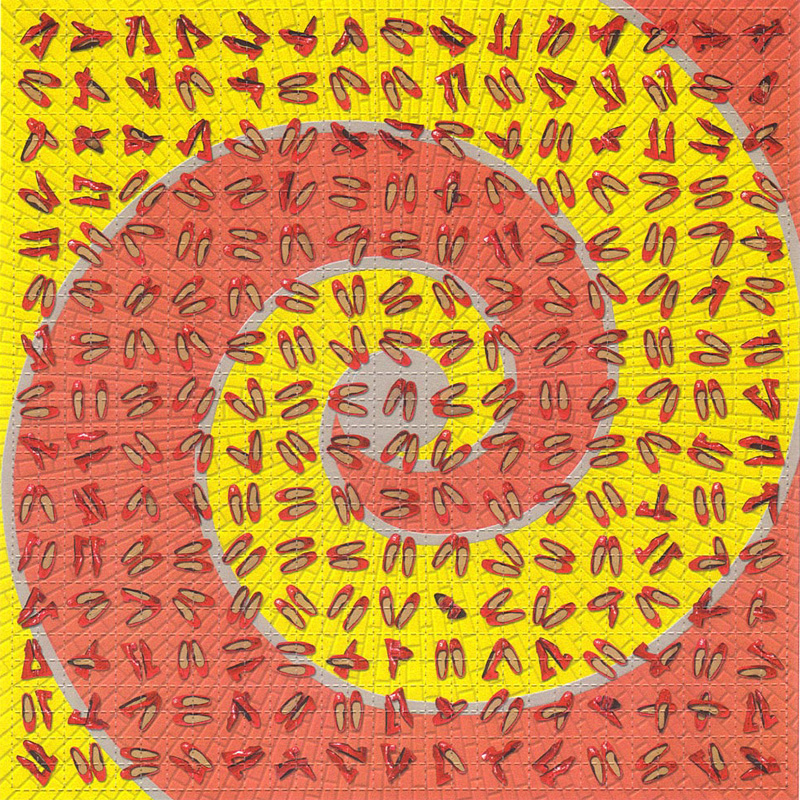|
Psilocin
Psilocin, also known as 4-hydroxy-''N'',''N''-dimethyltryptamine (4-HO-DMT), is a substituted tryptamine alkaloid and a serotonergic psychedelic. It is present in most psychedelic mushrooms together with its phosphorylated counterpart psilocybin. Psilocybin, as well as synthetic esters such as 4-AcO-DMT (psilacetin; ''O''-acetylpsilocin) and 4-PrO-DMT (''O''-propionylpsilocin), are prodrugs of psilocin. Acting on the serotonin 5-HT2A receptors, psilocin's psychedelic effects are directly correlated with the drug's occupancy at these receptor sites. It also interacts with other serotonin receptors and targets. The subjective mind-altering effects of psilocin are highly variable in their qualitative nature but resemble those of lysergic acid diethylamide (LSD) and ''N'',''N''-dimethyltryptamine (DMT). Psilocin is a Schedule I drug under the Convention on Psychotropic Substances. Uses Psilocin is used recreationally, spirituality or shamanically, and medically. ... [...More Info...] [...Related Items...] OR: [Wikipedia] [Google] [Baidu] |
Psilocybin
Psilocybin, also known as 4-phosphoryloxy-''N'',''N''-dimethyltryptamine (4-PO-DMT), is a natural product, naturally occurring tryptamine alkaloid and Investigational New Drug, investigational drug found in more than List of psilocybin mushroom species, 200 species of mushrooms, with Hallucinogen, hallucinogenic and Serotonin, serotonergic effects. Effects include euphoria, changes in perception, a distorted sense of time (via brain desynchronization), and perceived spiritual experiences. It can also cause adverse reactions such as nausea and panic attacks. Its effects depend on set and setting and one's subject-expectancy effect, expectations. Psilocybin is a prodrug of psilocin. That is, the compound itself is biologically inactive but quickly converted by the body to psilocin. Psilocybin is transformed into psilocin by dephosphorylation mediated via phosphatase enzymes. Psilocin is structural analog, chemically related to the neurotransmitter serotonin and acts as a binding ... [...More Info...] [...Related Items...] OR: [Wikipedia] [Google] [Baidu] |
4-AcO-DMT
4-Acetoxy-''N'',''N''-dimethyltryptamine (4-AcO-DMT or 4-acetoxy-DMT), also known as ''O''-acetylpsilocin or psilacetin, is a psychedelic drug of the tryptamine family related to psilocybin and psilocin. It is a synthetic derivative of psilocin (4-HO-DMT) in which the hydroxyl group has been acetylated, and is the analogue of psilocybin (4-PO-DMT) in which the phosphate ester has been replaced with an acetate ester. The drug is a prodrug of psilocin and is orally active similarly to psilocybin. As a prodrug of psilocin, 4-AcO-DMT acts as a non-selective serotonin receptor agonist, including of the serotonin 5-HT2A receptor. The hallucinogenic effects of psilocin are thought to be mediated by activation of this receptor, although other receptors also contribute to its effects. 4-AcO-DMT's effects are reported to be similar to those of psilocybin and psilocybin mushrooms. However, it has been said to have reduced side effects such as nausea and body load that can be cau ... [...More Info...] [...Related Items...] OR: [Wikipedia] [Google] [Baidu] |
Serotonergic Psychedelic
Psychedelics are a subclass of hallucinogenic drugs whose primary effect is to trigger non-ordinary mental states (known as psychedelic experiences or "trips") and a perceived "expansion of consciousness". Also referred to as classic hallucinogens or serotonergic hallucinogens, the term ''psychedelic'' is sometimes used more broadly to include various other types of hallucinogens as well, such as those which are atypical or adjacent to psychedelia like salvia and MDMA, respectively. Classic psychedelics generally cause specific psychological, visual, and auditory changes, and oftentimes a substantially altered state of consciousness. They have had the largest influence on science and culture, and include mescaline, LSD, psilocybin, and DMT. There are a large number of both naturally occurring and synthetic serotonergic psychedelics. Most psychedelic drugs fall into one of the three families of chemical compounds: tryptamines, phenethylamines, or lysergamides. They pro ... [...More Info...] [...Related Items...] OR: [Wikipedia] [Google] [Baidu] |
Substituted Tryptamine
Substituted tryptamines, or simply tryptamines, also known as serotonin analogues (i.e., 5-hydroxytryptamine analogues), are organic compounds which may be thought of as being derived from tryptamine itself. The molecular structures of all tryptamines contain an indole ring, joined to an amino group, amino (NH2) group via an ethyl (−CH2–CH2−) side chain, sidechain. In substituted tryptamines, the indole ring, sidechain, and/or amino group are modified by substituting another group for one of the hydrogen (H) atoms. Well-known tryptamines include serotonin, an important neurotransmitter, and melatonin, a hormone involved in regulating the sleep-wake cycle. Tryptamine alkaloids are found in fungi, plants and animals; and sometimes used by humans for the neurological or psychotropic effects of the substance. Prominent examples of tryptamine alkaloids include psilocybin (from "psilocybin mushrooms") and dimethyltryptamine, DMT. In South America, dimethyltryptamine is obtained f ... [...More Info...] [...Related Items...] OR: [Wikipedia] [Google] [Baidu] |
5-HT2A
The 5-HT2A receptor is a subtype of the 5-HT2 receptor that belongs to the serotonin receptor family and functions as a G protein-coupled receptor (GPCR). It is a cell surface receptor that activates multiple intracellular signalling cascades. Like all 5-HT2 receptors, the 5-HT2A receptor is coupled to the Gq/G11 signaling pathway. It is the primary excitatory receptor subtype among the serotonin-responsive GPCRs. The 5-HT2A receptor was initially noted for its central role as the primary target of serotonergic psychedelic drugs such as LSD and psilocybin mushrooms. It later regained research prominence when found to mediate, at least in part, the effects of many antipsychotic drugs, particularly atypical antipsychotics. Downregulation of post-synaptic 5-HT2A receptors is an adaptive response triggered by chronic administration of selective serotonin reuptake inhibitors (SSRIs) and atypical antipsychotics. Elevated 5-HT2A receptor density has been observed in suicidal an ... [...More Info...] [...Related Items...] OR: [Wikipedia] [Google] [Baidu] |
4-PrO-DMT
4-Propionoxy-''N,N''-dimethyltryptamine (4-PrO-DMT, or O-Propionylpsilocin) is a synthetic psychedelic drug from the tryptamine family with psychedelic effects, and is believed to act as a prodrug for psilocin. It produces a head-twitch response in mice. It has been sold online as a designer drug since May 2019. It was first identified as a new Psychoactive drug, psychoactive substance in Sweden, in July 2019. A number of related derivatives have been synthesized as prodrugs of psilocin for medical applications. Recreational use Dosage 4-PrO-DMT is reported to be orally Psychoactive drug, psychoactive substance and while dosage effects have been studied in mice, its effects and longevity on humans has not been formally studied. The effects of 4-PrO-DMT are similar to those of psilocin (4-HO-DMT), as it acts as a prodrug. Toxicity Very little data about the toxicity or pharmacology of 4-PrO-DMT is known. Its chemical structure and Pharmacology, pharmacological activity are ... [...More Info...] [...Related Items...] OR: [Wikipedia] [Google] [Baidu] |
Serotonin Receptor Agonist
A serotonin receptor agonist is an agonist of one or more serotonin receptors. They activate serotonin receptors in a manner similar to that of serotonin (5-hydroxytryptamine; 5-HT), a neurotransmitter and hormone and the endogenous ligand of the serotonin receptors. Non-selective agonists Serotonergic psychedelics such as tryptamines (e.g., psilocybin, psilocin, , 5-MeO-DMT, bufotenin), lysergamides (e.g., , ergine ()), phenethylamines (e.g., mescaline, 2C-B, 25I-NBOMe), and amphetamines (e.g., , ) are non-selective agonists of serotonin receptors. Their hallucinogenic effects are specifically mediated by activation of the 5-HT2A receptor. Drugs that increase extracellular serotonin levels such as serotonin reuptake inhibitors (e.g., fluoxetine, venlafaxine), serotonin releasing agents (e.g., fenfluramine, ), and monoamine oxidase inhibitors (e.g., phenelzine, moclobemide) are indirect non-selective serotonin receptor agonists. They are used variously as antidepressant ... [...More Info...] [...Related Items...] OR: [Wikipedia] [Google] [Baidu] |
Serotonin
Serotonin (), also known as 5-hydroxytryptamine (5-HT), is a monoamine neurotransmitter with a wide range of functions in both the central nervous system (CNS) and also peripheral tissues. It is involved in mood, cognition, reward, learning, memory, and physiological processes such as vomiting and vasoconstriction. In the CNS, serotonin regulates mood, appetite, and sleep. Most of the body's serotonin—about 90%—is synthesized in the gastrointestinal tract by enterochromaffin cells, where it regulates intestinal movements. It is also produced in smaller amounts in the brainstem's raphe nuclei, the skin's Merkel cells, pulmonary neuroendocrine cells, and taste receptor cells of the tongue. Once secreted, serotonin is taken up by platelets in the blood, which release it during clotting to promote vasoconstriction and platelet aggregation. Around 8% of the body's serotonin is stored in platelets, and 1–2% is found in the CNS. Serotonin acts as both a vasoconstrictor and vas ... [...More Info...] [...Related Items...] OR: [Wikipedia] [Google] [Baidu] |
Alkaloid
Alkaloids are a broad class of natural product, naturally occurring organic compounds that contain at least one nitrogen atom. Some synthetic compounds of similar structure may also be termed alkaloids. Alkaloids are produced by a large variety of organisms including bacteria, fungus, fungi, Medicinal plant, plants, and animals. They can be purified from crude extracts of these organisms by acid-base extraction, or solvent extractions followed by silica-gel column chromatography. Alkaloids have a wide range of pharmacology, pharmacological activities including antimalarial medication, antimalarial (e.g. quinine), asthma, antiasthma (e.g. ephedrine), chemotherapy, anticancer (e.g. omacetaxine mepesuccinate, homoharringtonine), cholinomimetic (e.g. galantamine), vasodilation, vasodilatory (e.g. vincamine), Antiarrhythmic agent, antiarrhythmic (e.g. quinidine), analgesic (e.g. morphine), antibacterial (e.g. chelerythrine), and anti-diabetic, antihyperglycemic activities (e.g. berb ... [...More Info...] [...Related Items...] OR: [Wikipedia] [Google] [Baidu] |
Hallucinogen
Hallucinogens, also known as psychedelics, entheogens, or historically as psychotomimetics, are a large and diverse class of psychoactive drugs that can produce altered states of consciousness characterized by major alterations in thought, mood, and perception as well as other changes. Hallucinogens are often categorized as either being psychedelics, dissociatives, or deliriants, but not all hallucinogens fall into these three classes. Examples of hallucinogens include psychedelics or serotonin 5-HT2A receptor agonists like LSD, psilocybin, mescaline, and DMT; dissociatives or NMDA receptor antagonists like ketamine, PCP, DXM, and nitrous oxide; deliriants or antimuscarinics like scopolamine and diphenhydramine; cannabinoids or cannabinoid CB1 receptor agonists like THC, nabilone, and JWH-018; κ-opioid receptor agonists like salvinorin A and pentazocine; GABAA receptor agonists like muscimol and gaboxadol; and oneirogens like ibogaine and harmaline, a ... [...More Info...] [...Related Items...] OR: [Wikipedia] [Google] [Baidu] |
Synthetic Compound
Some chemical authorities define an organic compound as a chemical compound that contains a carbon–hydrogen or carbon–carbon bond; others consider an organic compound to be any chemical compound that contains carbon. For example, carbon-containing compounds such as alkanes (e.g. methane ) and its derivatives are universally considered organic, but many others are sometimes considered inorganic, such as certain compounds of carbon with nitrogen and oxygen (e.g. cyanide ion , hydrogen cyanide , chloroformic acid , carbon dioxide , and carbonate ion ). Due to carbon's ability to catenate (form chains with other carbon atoms), millions of organic compounds are known. The study of the properties, reactions, and syntheses of organic compounds comprise the discipline known as organic chemistry. For historical reasons, a few classes of carbon-containing compounds (e.g., carbonate salts and cyanide salts), along with a few other exceptions (e.g., carbon dioxide, and even hydrogen cy ... [...More Info...] [...Related Items...] OR: [Wikipedia] [Google] [Baidu] |






